Meat protein contains all the essential and essential amino acids necessary for the human body (that is, those that are not formed in the human body). 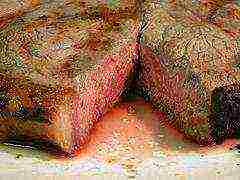 Unlike plant foods, relatively small amounts of meat can provide a daily protein requirement. For example, a serving of beef (eighty-five grams) provides half the daily protein intake, and a serving of pork provides 48% of the daily value.
Unlike plant foods, relatively small amounts of meat can provide a daily protein requirement. For example, a serving of beef (eighty-five grams) provides half the daily protein intake, and a serving of pork provides 48% of the daily value.
In addition to protein, meat contains trace elements necessary for humans, including iron, which is in a form that is easily assimilated by the human body.
Despite the rather significant content of cholesterol and extractives in many types of meat, their amount is significantly reduced when cooking meat. But we must remember that about 50% of these substances from meat goes into broth.
Veal
Dignity: in comparison with other types of meat, it contains a minimum amount of fat, therefore it is used in dietary nutrition. Also, boiled veal is used in medical nutrition - to restore the body after infectious diseases, injuries and burns.
Flaws: Strong veal broths are not recommended for dietetic nutrition due to their high content of extractive nitrogen-containing substances and purine bases. The concentration of these compounds in veal broth is higher than in beef broth.
On the one hand, these substances stimulate the work of the digestive glands, and thereby help to improve the absorption of food. But on the other hand, these compounds negatively affect the functioning of the nervous system - they lead to excessive overexcitation. Purine bases are also capable of disrupting the metabolism in the human body, as a result of which uric acid retention and the deposition of its salts occur, leading, for example, to gout.
Beef
Dignity: high content of complete protein (especially useful for children and athletes), iron (used for the prevention and treatment of iron deficiency anemia). Lean beef contains a lot of connective tissue proteins.
Flaws: Fatty beef puts unnecessary strain on the liver and pancreas.
Mutton
Dignity: lower cholesterol content in the fat of lamb meat compared to beef (2.5 times lower) and pork fat (4 times less). Lamb contains less extractive substances than other types of meat.
Flaws: increased load on the digestive tract due to the high refractoriness of lamb fat.
Chicken
Dignity: has high dietary properties similar to veal. Chicken protein is complete, as it has a balanced composition of essential and essential amino acids. The assimilation of chicken meat is better than beef and pork.
Flaws: It is recommended to exclude chicken broth for diseases of the gastrointestinal tract (ulcers), since it has an increased sokogonny effect, i.e. causes increased secretion of gastric juice.
In the article "Which poultry meat is the most useful and for whom?" you can get acquainted with the detailed characteristics of different types of meat.
Pork
Dignity: high content of the essential amino acid lysine, which has a tremendous effect on the entire protein metabolism in the human body, as well as on the formation of the human bone skeleton (especially in childhood).
Flaws: pork fat should be limited to a minimum with cholecystitis, duodenitis (inflammation of the duodenum), inflammation of the bile ducts in the liver and atherosclerosis.
Rabbit
Dignity: the meat has a high dietary quality similar to that of poultry. Contains a minimum amount of fat. In its structure, meat has very small muscle fibers that are easily absorbed by the body. Ranked first in the amount of protein in meat. Antiallergenic meat, it is recommended in medical nutrition to restore the human body after infectious diseases.
Flaws: virtually absent.
meat dish photo
". The site contains a large number of meat dishes from different types of meat. All recipes are colorfully illustrated.
Similar materials
Hi friends!
Last time, let me remind you, the topic of our conversation was meat. Namely - the benefits of meat and harm to humans. We disassembled in detail (one would like to say - by the bones) the subject of the conversation and the question "to eat or not?" we answered - yes! Now it remains to figure out which variety to prefer so that both the body is as useful as possible and the tongue is as tasty as possible?
I tried to pay attention to the most popular types of meat, both red and white, and I got quite a lot of information. So I apologize in advance that I did not have time to highlight the usefulness of the meat of a wildebeest or a French frog 🙂 I worked on animals more familiar to most of us.
Why is meat useful?
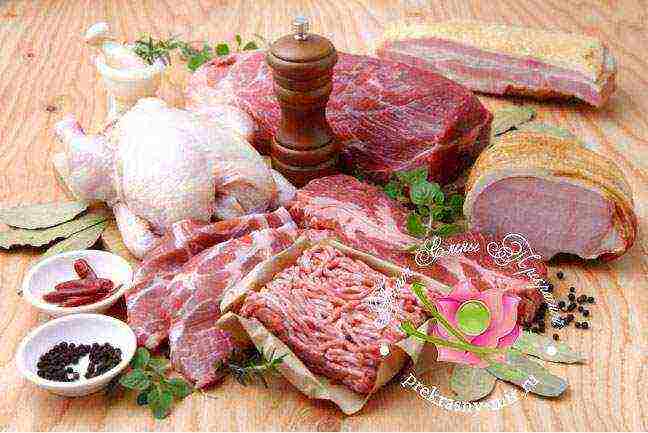
Lamb: benefits and harms
Shurpa, dolma, shish kebab, pilaf, beshbarmak - from the names of dishes, in which mutton is traditionally played solo, drooling!
Not the most common variety, in fact, and in vain. Unlike pork familiar to many, lamb contains only 135 calories per 100 grams, and there are 2-3 times more nutrients:
- Iron
- Vitamins of the whole group B, as well as E and K
- Potassium, magnesium, sodium, calcium, phosphorus
At the same time, there is very little cholesterol in it - this is why ram meat is especially useful!
Lamb can only harm the following categories of people:
- Children and the elderly.
Due to the immaturity or "fatigue" of the digestive system, lamb can be a heavy food for "old and small". And for the elderly, such a moment can also turn out to be dangerous - the lamb contains bacteria that can provoke the development of joint diseases, to which people of age are so susceptible. Actually, therefore, lamb is contraindicated for people from the following category:
- Suffering from arthritis or gout
- People with gastrointestinal diseases
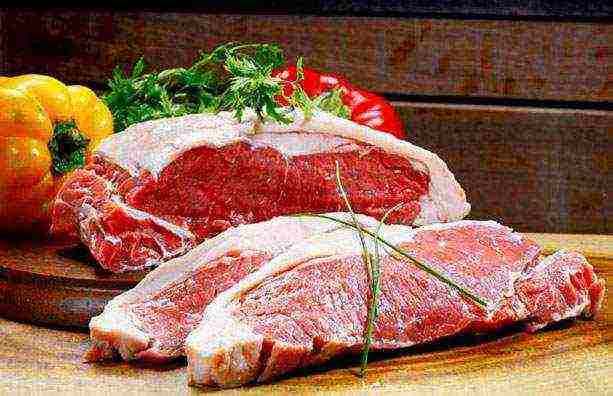
Beef: benefits and harms
The cow is an excellent source of energy for athletes, people who do hard physical work, in general, everyone who needs to replenish large energy expenditures.
In general, beef is good because it:
- Low-fat (and therefore non-nutritive)
- Rich in protein
- Good for the nervous system (soothes)
- Strengthens blood vessels, helps the heart
Can beef be harmful? Only if it is improperly cooked (undercooked or overcooked), if purchased from an unscrupulous seller (this applies to any type of meat), or if it was consumed in excess.
Pork: benefits and harms
Pork contains the same beneficial elements as other meats, and can be harmful if it is undercooked (raw pork can be a source of bacteria!) Or is also consumed in excess. The norm for an adult is 200 grams per day.
Pork is especially recommended for mothers who feed a baby with breast milk: it is this meat product, due to its characteristics, that is absorbed better than others during a given period of a woman's life.
Pork is also good for men - experts say that pork steak can serve as an excellent aphrodisiac!
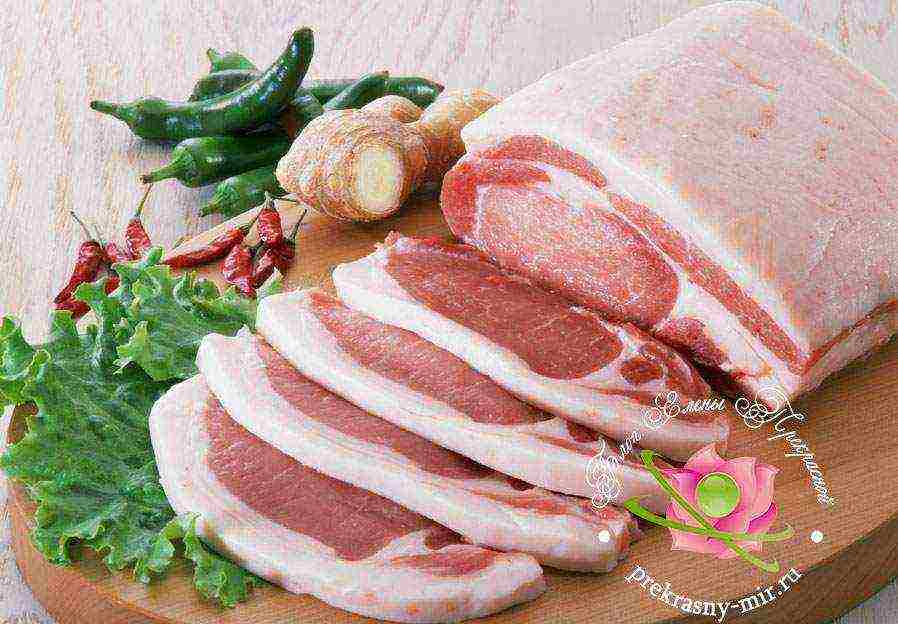
People of some nationalities or religions, for example, Muslims, categorically refuse pork in any form. The explanation for this is most often the untidiness of the animal, feeding on waste from the table and wallowing in the mud.
What can I say about this? Ethical issues are meaningless for discussion, I think. In addition to pork, there are many other varieties of excellent and healthy meat in the world. For example,
Turkey meat: benefits and harms
From red meat, I smoothly move to white, namely, poultry. Poultry meat tastes more tender, cooks faster and easier (although not in all cases), and it costs less than red meat. At the same time, it is also rich in useful properties, for example,
- vitamins: A, E,
- trace elements: magnesium-calcium-phosphorus-manganese-iodine-sodium
and it has no contraindications!
Turkey meat (according to the recommendations of pediatricians), in most cases, becomes the first meat complementary food in the infant's diet, moving from milk to adult food - and that says something!
Can there be harm from turkey meat? Perhaps, in this case, one can safely say that it is not.
Chicken meat: benefits and harms
Chicken in any form: boiled, fried, baked is a favorite dish of many of us. It's time to get to know each other better and find out what else is useful for chicken meat!
- An abundance of protein and amino acids needed by the body
- Low calorie content - only 190 calories per 100 grams of product
- A lot of potassium, phosphorus
- It contains glutamine, an amino acid responsible for muscle growth (which is why bodybuilders and everyone who needs to build muscle, but not fat, love it so much)
- It is useful for the kidneys, circulatory system, immunity and musculoskeletal system.
It is not the chicken itself that can cause harm, but rather improper handling or storage. As with any meat product, chicken can serve as an excellent shelter for harmful bacteria, so overcooking is better than undercooking.

Soy meat: benefits and harms
And finally, a favorite of vegetarians who miss the meaty taste - soy product! Not really meat in the strict sense of the word, of course, but first things first.
Soy is a leguminous plant native to Asia. By grinding the beans into flour, and then mixing the flour with water and meal, a mixture is obtained, which is then turned into minced meat, cutlets, sausages, goulash and other semi-finished products. A piece of meat in the form of a steak, for example, cannot be obtained from soybeans, but here's a delicious cutlet - please.
A successful analogue contains almost all the same trace elements and vitamins as the original, and at the same time it contains almost no cholesterol and fats (which is a definite plus!)
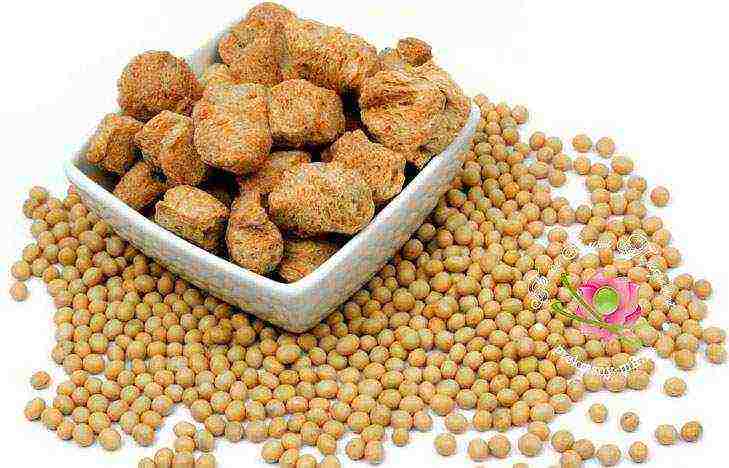
Where can I buy? At any grocery store.
Soy meat cannot bring harm, unless, of course, it is GMO - soy. Read the product label carefully and refuse to purchase if the country of origin is the United States: in this case, the risks of buying GMO - soybeans are very high.
Soy meat is cooked in the same way as regular meat, but it tastes different ... maybe just a little. So you can safely introduce it into your diet and replenish your vitamin reserve without excess cholesterol and fats!
***
So, friends, as you can see - the choice is wide, for every taste! Experiment, cook different dishes every day and find your favorite recipes!
useful
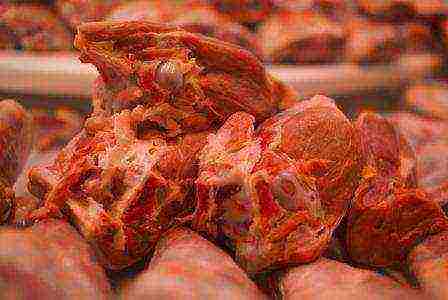
To indicate the quality of the meat itself (cut, piece), an indicator such as a variety is commonly used.
Meat variety
determined by the content of connective tissue - the less it is, the higher the grade and the greater the nutritional and culinary value of meat
To put it simply, a variety is the degree of softness of the meat. The softer the meat, the easier it is to cook, and the higher the grade.
It should be immediately stipulated that in different sources slightly different definitions of the varieties of this or that meat are given, in one they are the same - the higher the nutritional value of a piece of meat, the higher its grade.
It is generally recognized that the highest grade of meat is only the tenderloin - the internal lumbar-iliac muscle of the carcass. In GOST, the definition of the highest grade is as follows: "muscle tissue without visible inclusions of connective and adipose tissue."
Beef meats
"GOST 7595-79 Meat. Cutting beef for retail trade ":
1st grade: hip; lumbar; dorsal; scapula, shoulder edge; shoulder and forearm; breast cuts.
2nd grade: Neck and Flank.
3rd grade: cut; foreshank; back shank.
Other sources call the 1st grade the highest, but there are also three varieties: the highest, the first and the second.
Veal meats are slightly different from beef
GOST 23219-78 Meat. Veal cutting for retail trade ":
1st grade: hip; lumbar; dorsal; scapular; shoulder edge.
2nd grade: chest with flank; cervical.
3rd grade: forearm and lower leg.
Horse meat varieties
It was not possible to find GOST, which defines the variety of horse meat, even outdated. However, many sources on the topic "cutting and trimming horse meat" argue that the definition of horse meat is similar to the definition of beef.
Varieties of lamb and goat meat
GOST 7596-81 Meat. Cutting lamb and goat meat for retail trade "* defines only two:
1st grade: hip; lumbar; scapular-dorsal.
2nd grade: cut; forearm and hind leg.
Pork varieties
there are also two of them according to "GOST 7597-55 Meat and pork. Cutting for retail trade "and everything is quite" simple "here:
NS 2nd grade include the shank and shank (simply speaking, the front and hind legs), and to 1st grade - everything else, i.e. scapular part; loin; brisket; lumbar part with flank and ham.
p.s. Based on the foregoing, it is obvious that a half carcass cannot be entirely of the highest grade. But if we make an appropriate sample in Prices, we will see the presence on the market of half carcasses and quarters of the premium grade. It is likely that in this case the sellers are not guided by either GOST or logic, but only advertise their goods in the best, from their point of view, way.
___
* deprecated
2-12-2011, 13:54
Beef and veal are divided into 3 varieties. The first class includes the dorsal, breast, sirloin, sirloin, rump and rump; to the second - the scapular and shoulder parts, as well as the flank; to the third - an incision, front and back shank.
Several schemes for cutting carcasses have been adopted among specialists in the meat industry. The most popular is South American. But there are also Italian, German, Dutch, Danish and Australian beef cutting schemes. In South American, the entire carcass is divided into 19 numbers. Because Argentine beef is a frequent visitor in our stores, and in Russia many industries use the South American cutting scheme, it is not superfluous to figure out what can be written on the meat tray.
Or, if, for example, you buy frozen meat in a supermarket, there is always a number on it, and you know exactly which part you are purchasing. Or what the market offers you.
What is what1. Thin edge. On a steak, roast beefFor excellent roast beef, the ribs are usually sawn off shorter and the meat is tied; bones can be removed completely, in this case, before tying the meat is rolled into a roll. The meat can also be used for stewing or roasting in large pieces.
Plan on baking for 2.5-3 hours.
2. Thick edge. For roast, stew, minced meat, slow braisingAfter removing the bones, the cut is cut into portions for cooking steaks. You can stew the meat of the neck near the ridge in cubes - up to 2 hours of processing, no less
3. Brisket. For roast in the oven and in a saucepan, chowder, soup, marinated roastAfter the brisket and ribs are removed, a long, flat piece of meat is left, which is usually rolled up and tied. It turns out to be an excellent roll. It can be stewed and then, after 1.5-2 hours, baked to obtain a golden brown crust. You can also pickle the brisket.
4. Shoulder. For minced meat, roast, stewCutting the shoulder of the shoulder blade depends on local traditions, but more often than not, large chunks of excellent-tasting pulp are simply cut from it for subsequent slow frying or braising.
5. Roast spatula. For stewing in sauce, roastThe meat needs to be stewed for at least 1.5 hours.
6. False fillet. For stewing in sauce, roast, jelly.There is relatively little fat in this piece, but there are thick streaks of connective tissue.This connective tissue is left on the meat as it softens when cooked in moist heat, releasing sticky substances into the broth. Can be used for various types of jellied meat.
7. For minced meat8.Shaft. On osso buco, hamin, soup, jellyThe muscular foreleg (knuckle) contains the medulla and several narrow, well-defined muscles with a thick layer of connective tissue and tendons. After removing the bone, the meat is usually cut into slices across the fibers or into cubes for stewing. When stewing, the gelatin of the connective tissues turns into a decoction, forming a very tasty and nutritious gravy. The shank is especially suitable for cooking French beef stew.
9. Diaphragm or edge. For slow cooking, slow grilling on coals (asado), soups and stews, minced meatThis cut consists of the muscle tissue overlying the ribs with layers of fat. Excellent meat for cooking, tasty and juicy. Great for minced meat for the same reasons.
10. Neck. For soup, khash, kharcho, minced meatNeck meat contains a lot of connective tissue and therefore needs to be cooked for a long time in broth. But it is tasty and inexpensive. Neck meat is usually sold cut into cubes or minced.
11. Tenderloin. For roast beef, steakThe tenderloin has the least amount of connective tissue and muscle veins. Therefore, it is expensive. But it makes the best steaks and classic English roast beef.
12. Fillet. For roast beef, steak13. Rump. For steaks and escolopesRump contains a large amount of the most tender meat on the last three ribs. Traditionally, it is baked with bones. But you can also cut into portions for grilled steaks. Moreover, the steak can also be with or without a bone.
14. Probe. For stewing, minced meat15. Sec. For extinguishing
9. Rump. Slow quenchingThese three cuts together make up the top of the hind leg. The dipstick - a cut of lean, fine-fiber meat from the inner thigh - is good for slow roasting and braising. Chip meat is slightly rougher, but also tastes good and is usually used for slow roasting or braising, as well as for salting and simmering. A rump is an excellent cut of meat between the sacrum and the pelvic bone. Most often, this meat is used to prepare high-quality roast beef.
16. Sewing. For steak, steak, escalope, roastThe meat is sold boneless and cut across the grain in portions to prepare tender steaks over an open fire or in a skillet. Pieces weighing more than 1.5 kg make an excellent roast beef, which is usually cooked over high heat.
17. Pasha. For rolls, minced meat, stewConsists of small internal muscles. It is from this part that the famous "butcher's steak" is prepared. Buying such meat is a great success, since it is cut from the central internal muscle, the only one in the whole carcass. It makes the most delicate steaks on the wire rack.
18. Shank. For stews, soups, slow stewingThe tendon-rich fleshy part of the hind leg: similar to the shank, it contains the marrow and a large percentage of connective tissue. Usually the bone is removed and the meat is cut into thick slices or cubes. Delicate aroma and high gelatin content give this meat excellent taste when stewed and in broth.
Information
Visitors in the group Guests, cannot leave comments on this publication.


